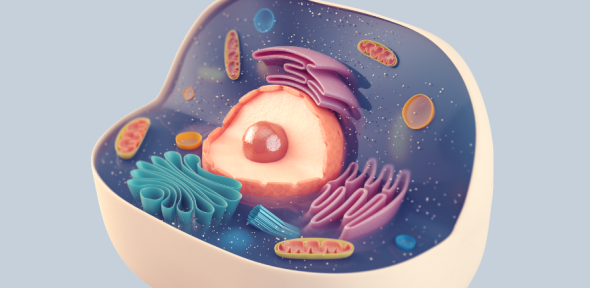
Submitted by Sophie Milbourne on Wed, 31/08/2022 - 19:00
The supply chain disruptions during the COVID-19 pandemic have highlighted the trade-off between external supply and local production. Importing from further away where it is more economically manufactured might be ok for many things, but not for those essential, say, medical and defence systems. Biology seems to have faced the same question.
For our body to develop from an embryo and then function correctly, the right genes must be expressed in the right cells at the right time. This is coordinated through chemical modifications of DNA and histones (proteins around which DNA wraps itself for compact storage). The starting materials for these modifications are provided by metabolites and so their availability is critical.
New research has found that cells have evolved a local production strategy in the nucleus, and not just importing from the mitochondria further away, to safeguard supply of key factors required for DNA and histone modifications.
Many of the cofactors and metabolites that tag DNA and histones – also called epigenetic modifications - are created by the so-called tricarboxylic acid (TCA) cycle. This is a series of chemical reactions that happens within the mitochondria. It would seem strange that all these cofactors that assist in essential processes in the cell are produced outside of the nucleus where they may not be stable and simply rely on diffusion to reach their destination, or they could be easily seized for use in other places en route.
Research from the Patil group together with their collaborators, published today in the journal Science Advances, reveals that parts of the TCA cycle, originally thought to only happen in the mitochondria, are happening in the nucleus, closer to the DNA and ready to be dispatched when critical processes of the cell increase their demand, without barriers.
“We knew that distinct singular enzymes responsible for producing epigenetic modifying factors are sometimes spotted in the nucleus, now we have shown that extended metabolic pathways function there. We identified activity of glutamine-to-fumarate, citrate-to-succinate, and glutamine-to-aspartate routes in the nuclei of HeLa cells. These are significant sections of the TCA cycle that are happening in a completely different part of the cell, in addition to what we originally considered as their unique location” said Eleni Kafkia, first author of the study.
The researchers also revealed the importance of this nuclear metabolic activity on cell fate decisions. As stem cells (cells with potential to form many other cell types) differentiate into specialised cell types, they require lots of changes in chromatin (DNA and histones) that determine which genes are turned on or off and ultimately what type of cell they will become. This process also heavily relies on the availability of metabolites produced in the TCA cycle.
The team used mouse embryonic stem cells and induced differentiation – the process where cells become specialised – and looked at where key enzymes that catalyse TCA cycle biochemical reactions were located.
Two of these enzymes, aconitase 2 and alpha-ketoglutarate dehydrogenase, moved out of the nucleus as the cells differentiated as their job in gene expression regulation was done. This reemphasises the importance of these enzymes to be in the nucleus in a timely manner to switch on and off crucial genes.
Dr Kiran Patil, lead author on the study, shared that “this discovery provides another angle to understand what affects gene expression. Now that we know these reactions happen in the nucleus, we can look into how metabolic processes in the nucleus contribute to gene expression and investigate any aberrations in disease or developmental stages for potential therapeutic intervention. It is also an important finding when we think about how drugs work. If a drug is targeting TCA cycle enzymes the impact may not be limited to the mitochondria, it may inadvertently
‘Operation of a TCA cycle subnetwork in the mammalian nucleus’ was published on 31st August 2022 in Science Advances. Read the full publication here.



